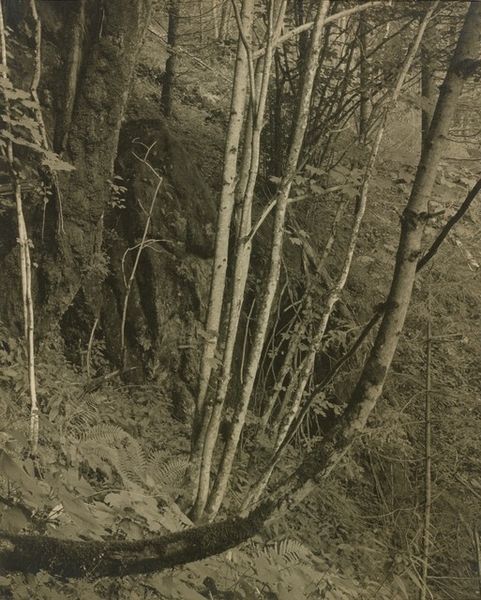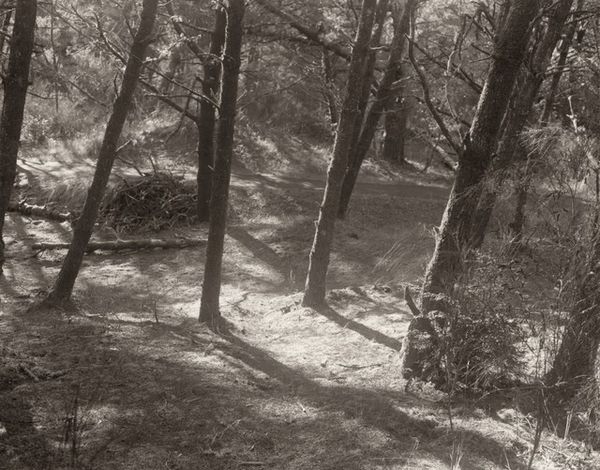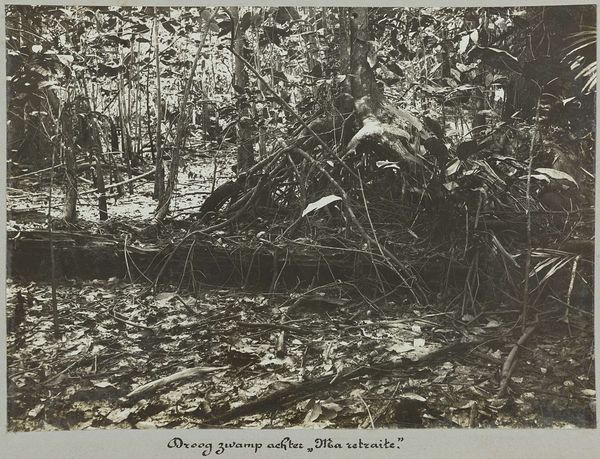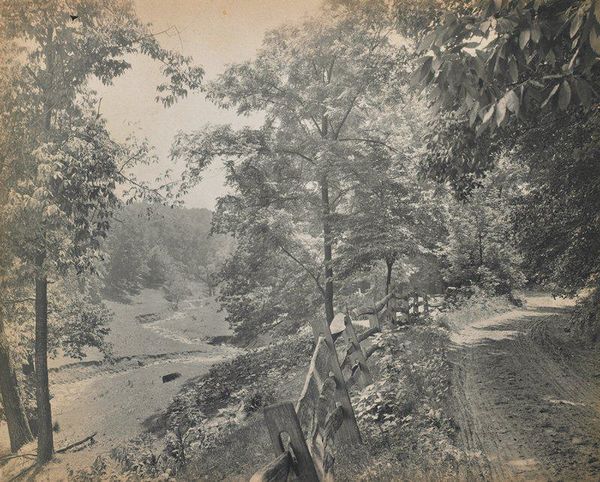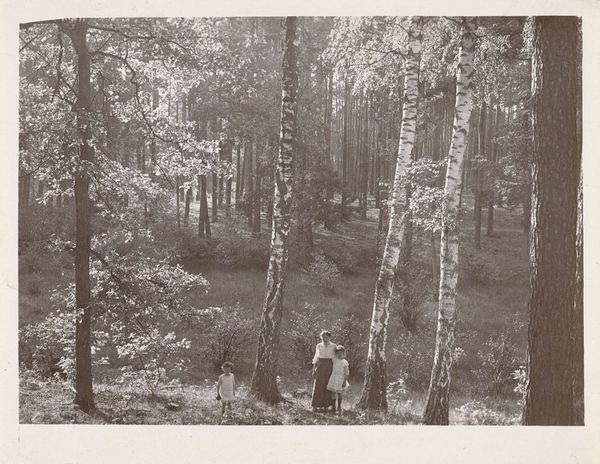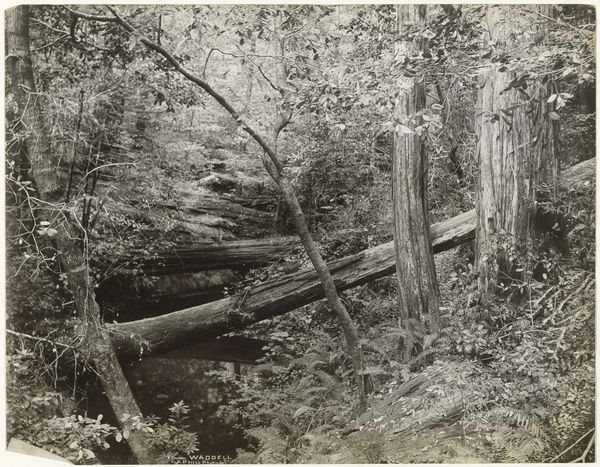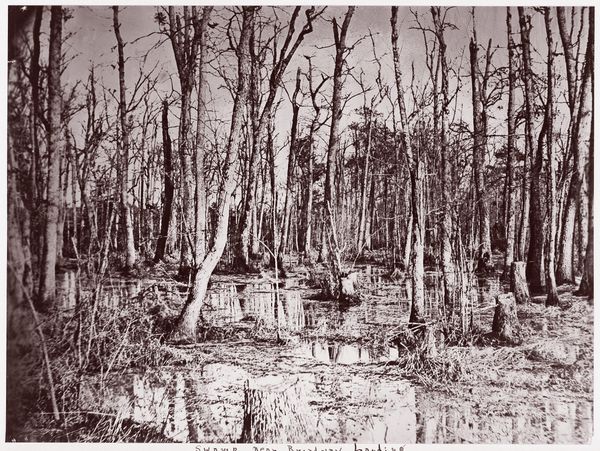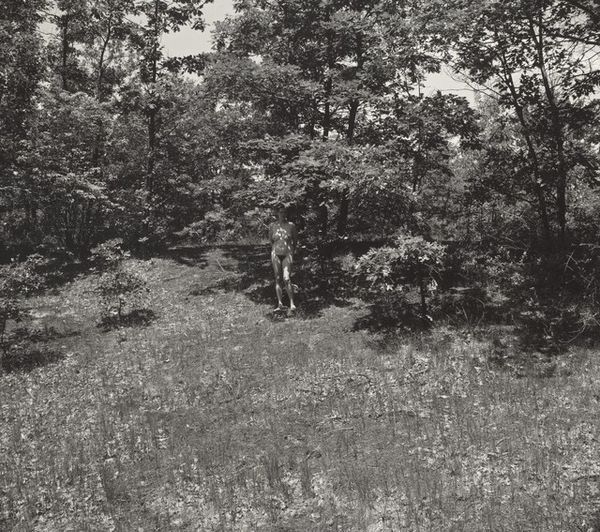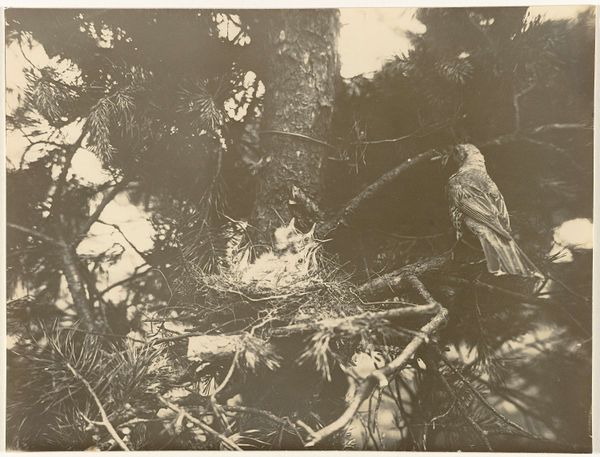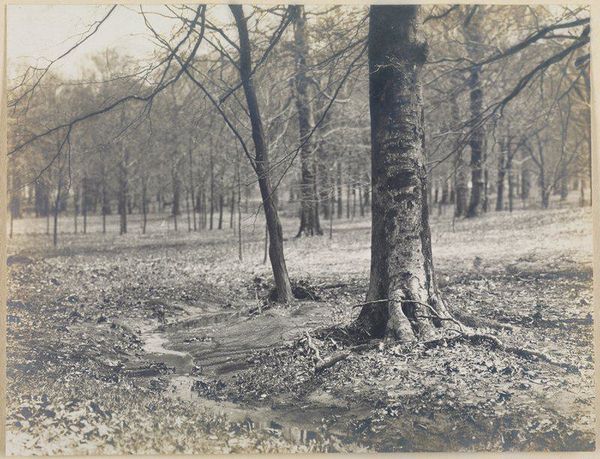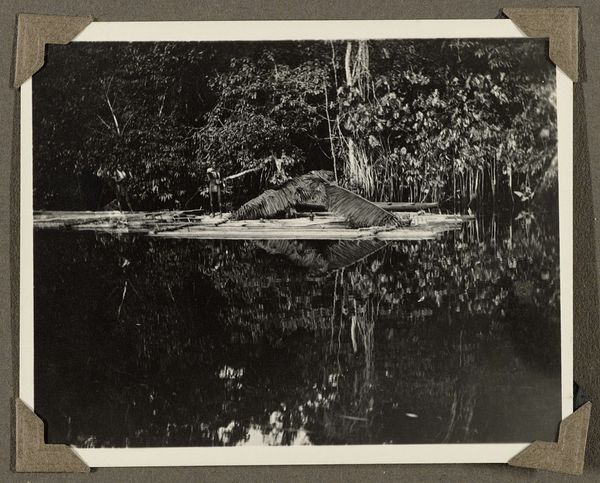
photography, gelatin-silver-print
#
portrait
#
landscape
#
street-photography
#
photography
#
gelatin-silver-print
#
realism
Dimensions: sheet (trimmed to image): 19.1 x 23.8 cm (7 1/2 x 9 3/8 in.)
Copyright: National Gallery of Art: CC0 1.0
Editor: This photograph, "Frontier Nursing Service, Kentucky," was taken by Marvin Breckinridge Patterson in 1937. It's a gelatin silver print, depicting a woman on horseback amidst a landscape filled with trees and, strangely, icicles. There’s a real stillness to it. What stands out to you? Curator: That stillness, as you call it, is precisely what invites us to delve into the historical and social circumstances surrounding this image. The Frontier Nursing Service itself was a powerful intervention, primarily led by women, aiming to provide healthcare to isolated communities in rural Kentucky. Patterson’s image then becomes a document not just of landscape, but of access and care in a moment of American history that's easily overlooked. Who has access and on what terms? Editor: I hadn't considered it in that light. The starkness of the landscape almost romanticizes the isolation, but you're right, access is key. The nurse on horseback—she represents a vital lifeline. Curator: Exactly. And consider the gaze – who is being photographed and by whom? Patterson, herself a woman from a privileged background, documenting the work of other women serving a marginalized community. There’s an inherent power dynamic we need to unpack. Is this representation empowering, exploitative, or somewhere in between? What visual cues might inform your answer? Editor: The icicles, which initially struck me as odd, now feel symbolic. Perhaps representing the harsh realities, the obstacles faced in providing this care? Curator: Precisely. Nature itself becomes an intersectional part of the narrative, posing unique challenges of terrain and climate that disproportionately affect marginalized communities. Think of intersectionality - we cannot speak of identity markers such as gender or class in isolation of others like ability or geography. It's about lived realities for these rural communities, especially the women within them. Editor: This has completely reshaped my view of the photograph. What started as a landscape now speaks volumes about gender, class, and access. Curator: And about the crucial role photography plays in shaping those narratives, both then and now.
Comments
No comments
Be the first to comment and join the conversation on the ultimate creative platform.
